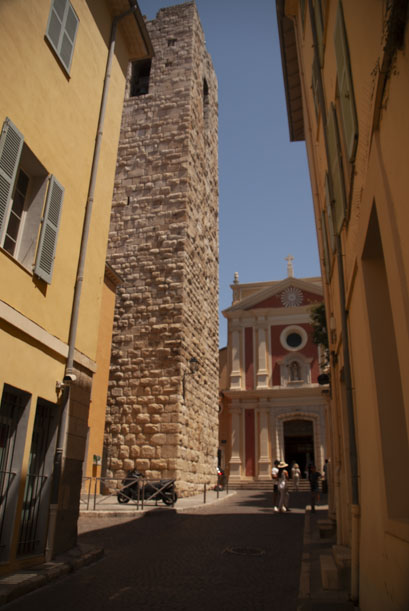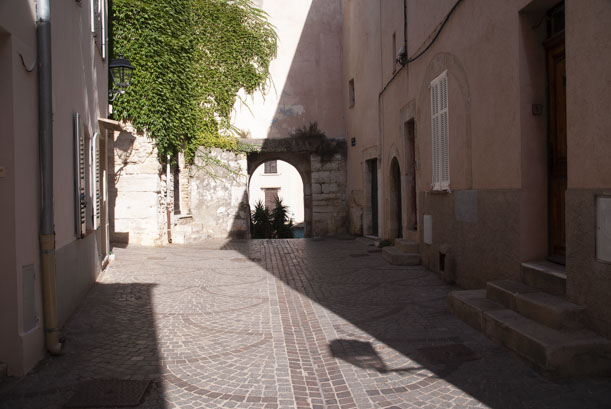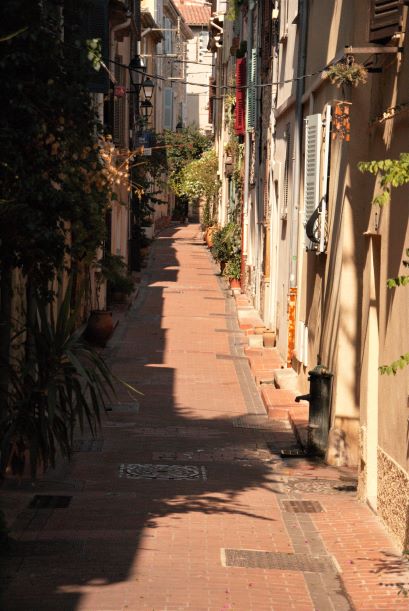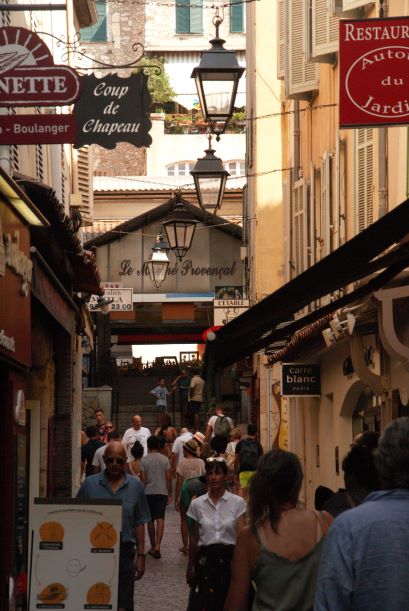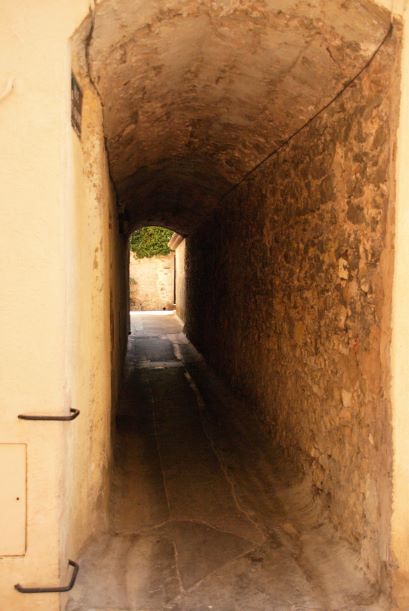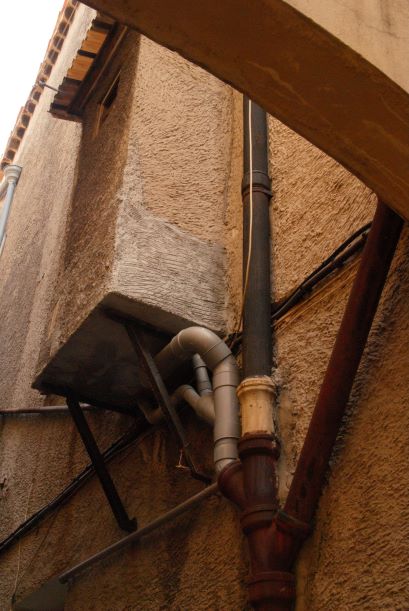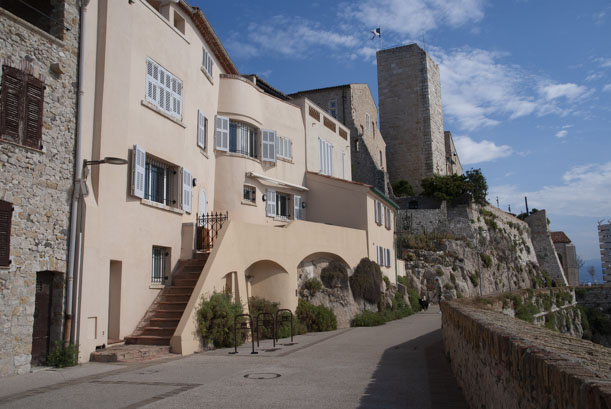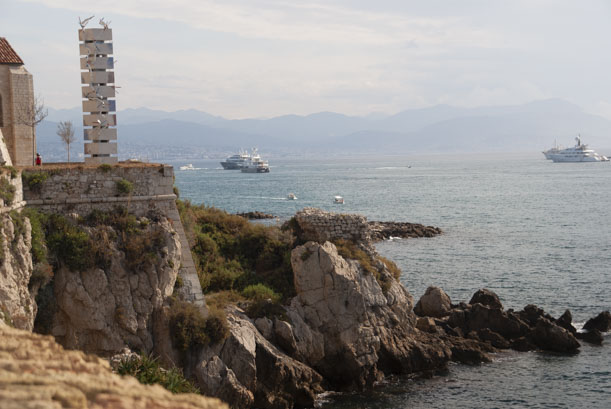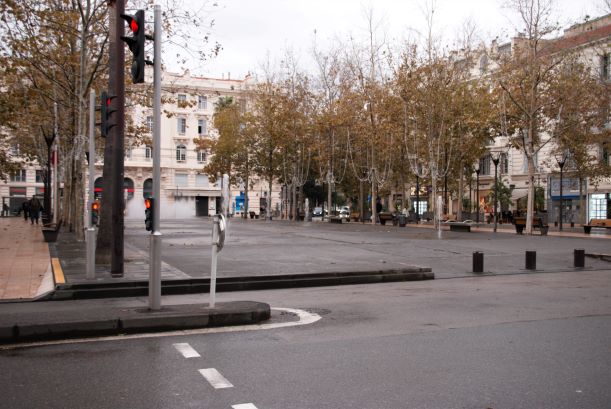Local Beaches
Antibes has four beaches: the Gravette; the Petit Gravette, Ponteil; and Salis. The Gravette looks like an artificial harbour beneath the old town ramparts but can only be used by swimmers. Although it has a sandy beach, the floor of the sea is rocky and some form of footwear is recommended. The Casa Ideas shop in the Place de la République usually has a stock of cheap ones, as does the JouéClub in Rue Lacan.
The Petit Gravette is a small pebble beach off Quai Henri Rambaud noted for its steep gravel shelving as you enter the water and really should only be used by experienced swimmers. The other beaches are shallow and sandy. This little beach has received little attention from the town over the last two years and appears to be left to go wild but it does have a freshwater shower and a line of warning bouys across it to keep boats away from swimmers.
Water is tested regularly both offshore and with samples taken at the beach. The efficiency of testing is apparent: beaches have been known to be closed after heavy rain if storm water drains wash pollutants into the sea water. The longest we have known a beach to be closed is two days: long enough for dilution and the sun's ultra violet light to kill bacteria. The summer season runs from June to August inclusive. Beach showers are often deactivated out of season, and more so now that the Côte d'Azur is suffering water shortages. Dogs are not allowed on beaches during this summer season.
Gravette
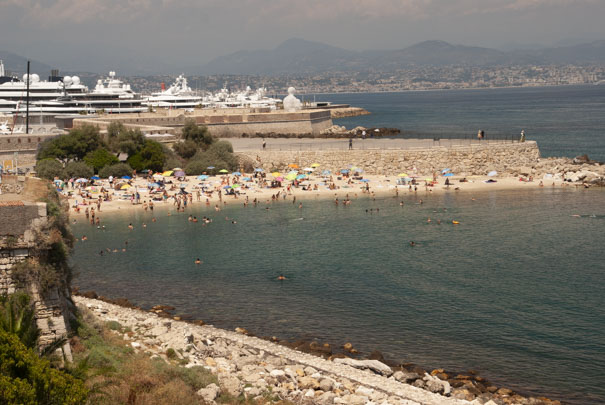
The water in the Gravette harbour is often clear as can be seen in this picture, but it can be cloudy after periods of strong wind, and also becomes less clear when very busy as the natural silt is stirred up. The water's cleanliness is shown by the many small fish which swim amongst the people. There are two freshwater showers on the beach which is supervised by lifeguards during the summer season. There has been a bar selling drinks and snacks on the ramparts above the beach but it appears this will be replaced for the 2025 summer season by a new bar located in the same place. In season there are lockers located next to the lifeguards' hut which take a 1 euro coin each time one is used. We recommend this beach for an early swim in the heart of summer to get over nighttime fug and warm yourself in the rising sun. The first bells at 07:00 will have woken you up.
The water deepens quickly as one swims towards the opening to the sea. The opening has large rocks to each side on which to stand and rest before returning to the beach. The beach sand is sifted each morning in summer to clear the flotsam and the prior day's rubbish. The water is generally clear but use though the day will stirs up the natural silt. Small jellyfish (medusa in French) tend to appear in late August/early September when the wind shifts to onshore. These are not dangerous but the sting is uncomfortable and leaves a red welt. The lifeguards post a chalked up sign when this happens with the density of jellyfish indicated by showing one to three of them on the board. The Lifeguards, as at 2025 summer season, also have anti histamine cream available for first aid, and local pharmacies stock the cream: showing the little welts will suffice for them to know what to sell you. Beyond them, the only natural risk come from mosquitoes and sunburn.
The background to this picture of the beach shows the large yachts lined up at the International Yacht Club mooring. Beyond are the resorts of Cagnes and Villeneuve Loubet and the foothills of the Alps Maritimes which rise high enough to become snow covered in winter and contains several ski resorts.
Ponteil and Salis
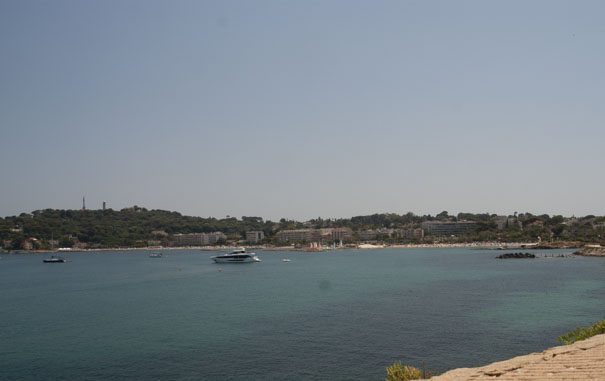
As the picture shows, the two beaches are long, and sandy. They slope gradually into the sea and are popular with families with small children and in the late afternoon with volley ball players.
The beaches are family friendly and have kiosks along them for snacks and drinks
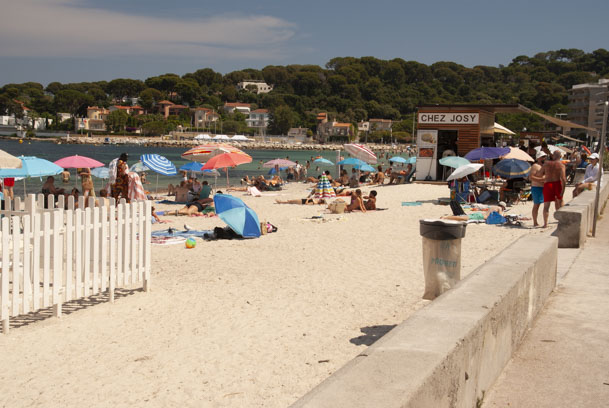
They are connected by a small promontory which has been recently redeveloped and includes the local sailing school and a handicap beach which has hard paths for wheel chairs, and young staff to help the disabled enjoy the sea. Do please read the right hand sign in this picture. Access needs to be pre arranged and we would recommend enquiring as to how before arriving at Antibes.
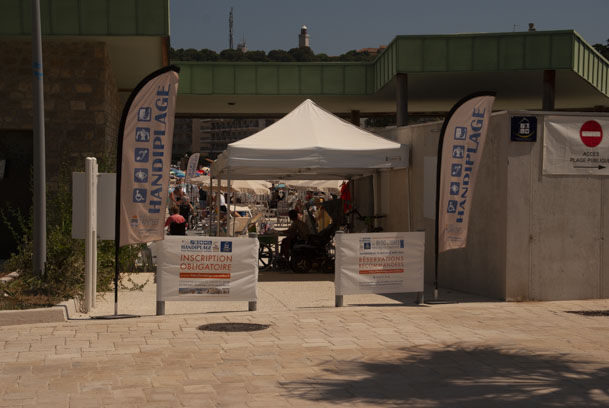
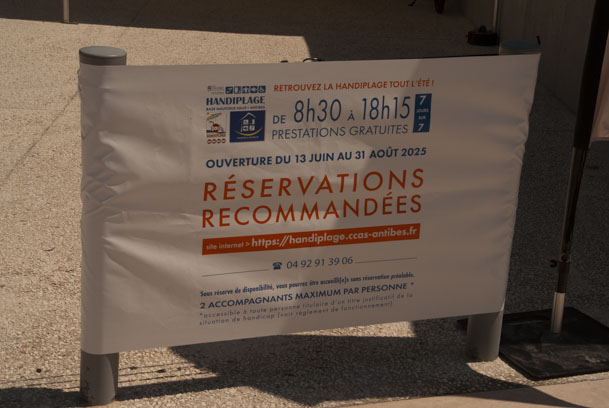
There is a business between the Ponteil beach and the town which will tow you out on various forms of rubber inflatable.
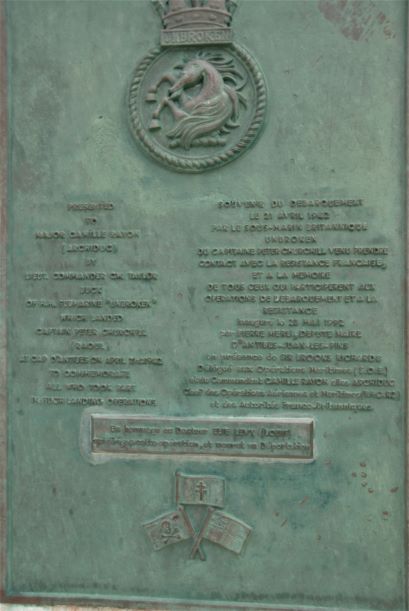 There is a memorial at the eastern end of these beaches to remind us of the covert landing of British submariners during the war to support the local Resistance and the backstory illustrates the tensions the war in an occupied country. The Dr Levy named in the memorial was a local resistance leader who was eventually captured and sent to his death once the Nazis had raised the bounty on him to a thousand old Francs from one hundred and some local became greedy.
There is a memorial at the eastern end of these beaches to remind us of the covert landing of British submariners during the war to support the local Resistance and the backstory illustrates the tensions the war in an occupied country. The Dr Levy named in the memorial was a local resistance leader who was eventually captured and sent to his death once the Nazis had raised the bounty on him to a thousand old Francs from one hundred and some local became greedy.
There is also the Royal Beach Club at this end of the beaches. This is the only example of a private beach in Antibes where you can hire a recliner and umbrella: sunbathe without touching sand; get into the water without touching sand; and it has a private bar, restaurant, and toilet services as well as eager young folk to serve you. The beach is operated by a local hotel and this arrangement is common in Juan Les Pins. The day fee at the Beach Cub is about EUR40 in 2025.
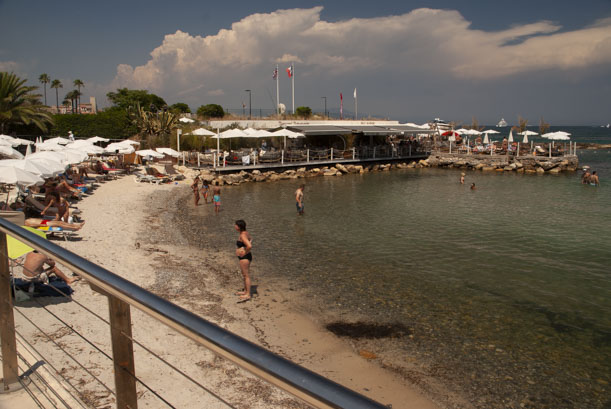
There are other beaches within walking distance of the town. To the east, immediately past Fort Carré, a pebble beach runs as far as Villeneuve Loubet. The Cap has more beaches which can be reached by a costal walkway. These include La Garoupe made famous in the inter war years, and the Baie des Milliardaires, a seemingly modern arrival perhaps popularised more by social media than any prior visitors. The coastal path does not cross the southern edge of the Cap which contains the world famous Hôtel du Cap-Eden-Roc, so you can't bump into George Clooney during Cannes Film Festival.
Juan les Pins has sandy beaches but only a small part is accessible to the public. Most of their beaches are in the Italian style: you pay for some space and an umbrella, which explains why so many Italian families visit Antibes.
Eglise Notre-Dame de la Garoupe and Light House
Antibes sits at the North East end of Cap d'Antibes, a promontory which contains the Hotel du Cap-Eden Roc, the Eilenroc Gardens and house, and which was the landing place of Napoleon when he escaped Elba and began the march ultimately to Waterloo. The Garoupe beach area sits on its eastern side and this is where Gerald and Sara Murphy and their Gilded Era USA money created the taste for summer holidays enjoyed by F Scott Fitzgerald and USA expatriates as they avoided the Prohibition of home while in a country where the cost of living was markedly cheaper. They rubbed shoulders with the modern art colony which included Picasso in his inter-war prime. Previously Juan les Pins and Antibes, sitting either side of top end of the Cap had been the playground of British and Russian aristocrats and old world USA millionaires, popular in winter because of their mild climate and that clean air which had drawn the artists of the 19C from Paris with the assistance of the of the European rail network.
The church sits atop the Cap at its narrowest point, with the modern lighthouse over which you will probably pass over if flying into Nice airport. It is from here that the picture on the Home page was taken. A pleasant shaded walk on a hot day is up the Chemin de Calvaire which climbs from the Salis beach area through the trees, many of which are olives and the food store of squirrels which can eat the raw, young, tart fruit. In June local fishermen repeat a thousand plus year old tradition and carry a statue of the Virgin Mary from the old town, up the Chemin de Calvaire to the church. There is a cafe in the church buildings now operated by restaurateurs from the town. They do an al fresco Sunday Lunch in season but book the prior week if you want it. There are public toilets at the building which are generally open, and a water pump for a drink if the cafe isn't open.
Shops and Restaurants
Opening hours: most shops in the old town and nearby open on Sundays but don't expect this for shops in the new town further inland. Shops deliberately appealing to tourists, such as restaurants, may still have a closing day each week. Many of the bars also serve food. Other shops, such as pharmacies and food retailers will close one day per week, if not two. This is nowadays largely down to France's Code de Travail which enforces the 35 hour week: it simply is not economic for small businesses to try and staff up for 7 day a week opening. Also, many retailers will close between 13:00 and 16:00. The upside is they are open until 19:00 so you can get ingredients for the family's dinner after leaving the beach. Bars open early, 07:00 is not unknown, as cafes for breakfast. Bars and restaurants will stay open into the early hours of the morning in summer but cut back to about 20:00 to 22:00 outside of the high season.
Remember: French evening restaurant kitchens often don't function until 19:00. They will be pleased to sit you down earlier and sell you a drink but nothing is going to happen about food until 19:00. Tipping is between you and the waiter; the restaurant includes service in its bill. It is usual to leave the small change for bar staff but make sure you get it first. Practice is becoming to assume you don't want it. Do take your bill to the counter if the staff are slow to come and settle up at the table which is anyway normal (there is an assumption that everyone comes to bar or cafe to relax, not rush). Waiting for a customer to leave before going to their table to pick up the cash is an easy way to get an unexpected tip.
Place Nationale and the Marché have open air restaurants with a wide range of fare from Moules to Pizza.
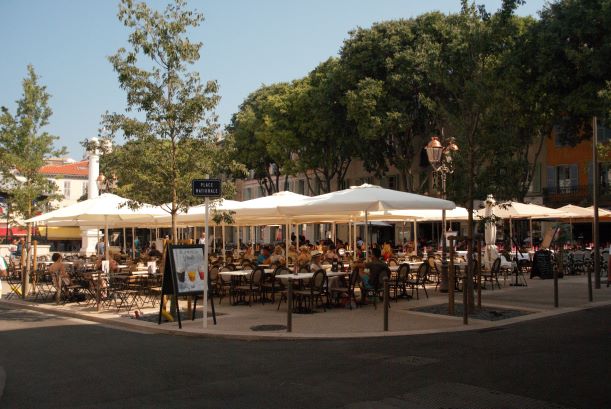
The town has a wide range of food shops including several supermarkets the nearest of which is a Carrefour in the Place Nationale. As you would expect, there are several boulangeries and they also take it in turn to close. There are also boucheries and wet fish shops but the latter tend to be expensive. If you have a car or fancy the bus, we would go up the large Carrefour hypermarket near the motorway junction if stocking up on groceries for one or two weeks.
